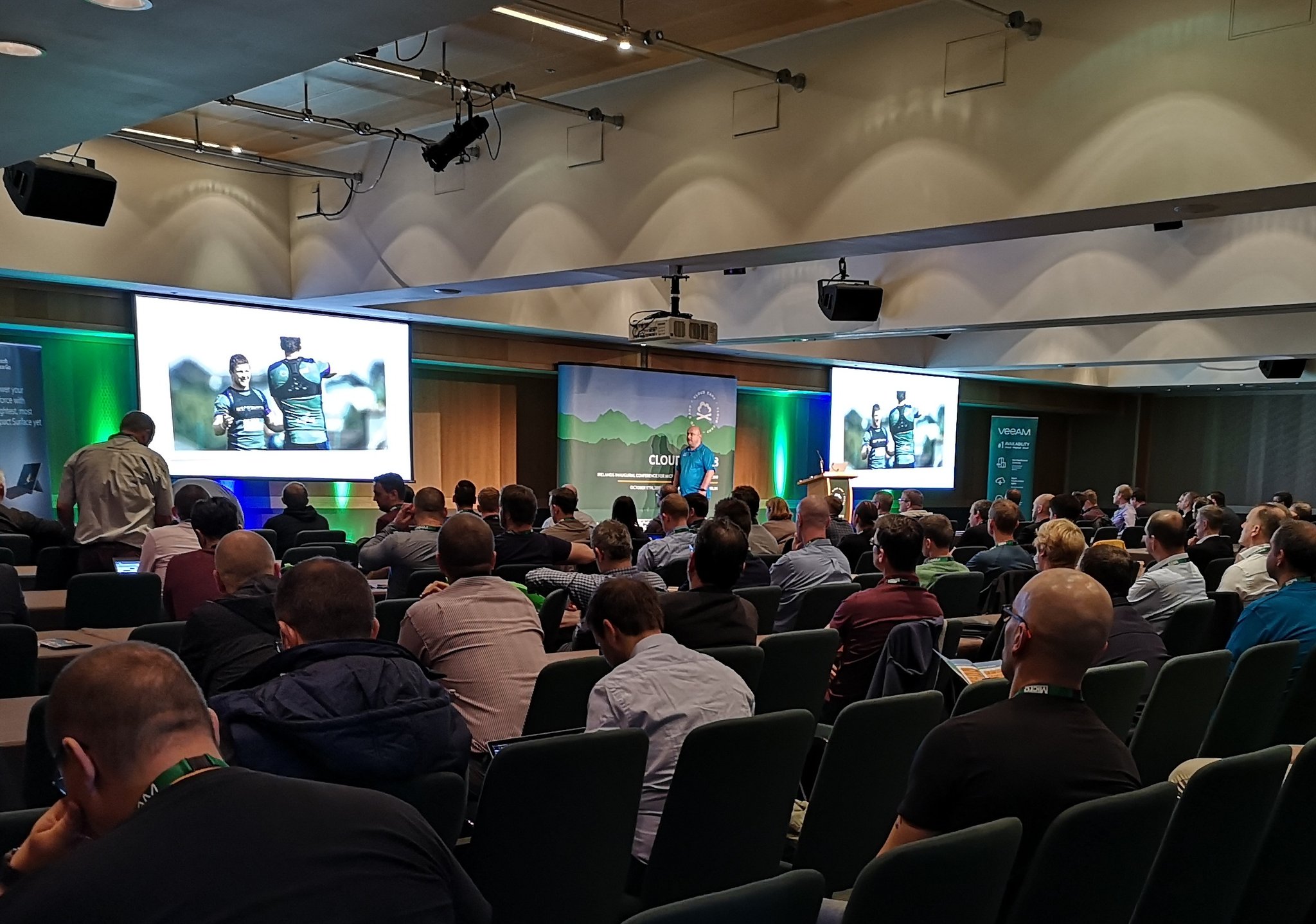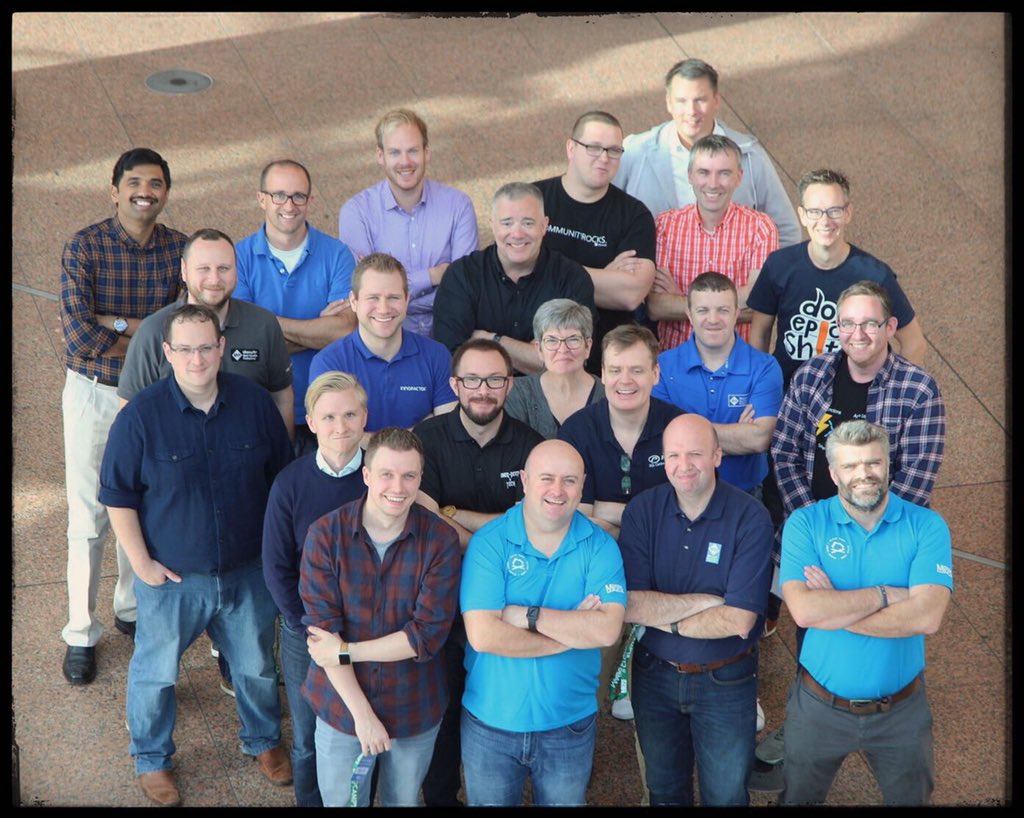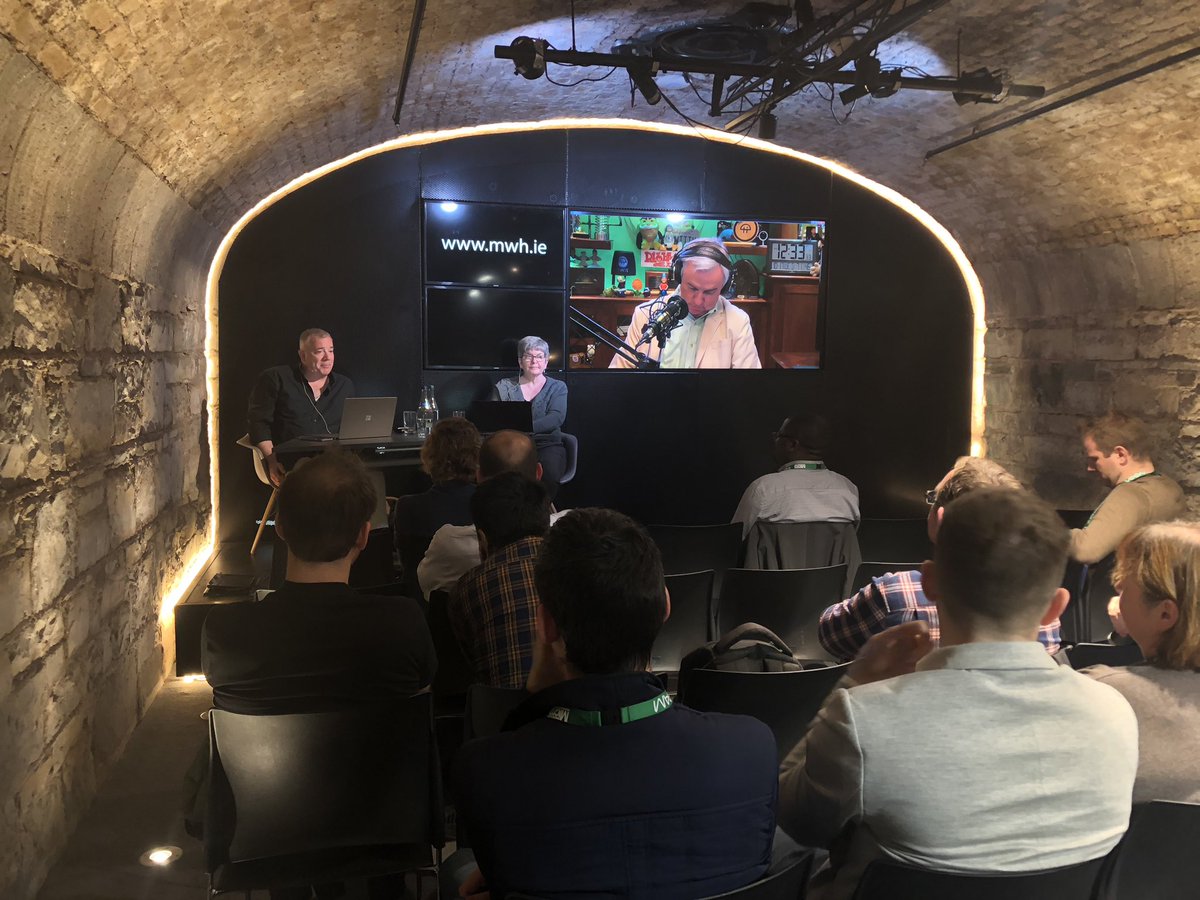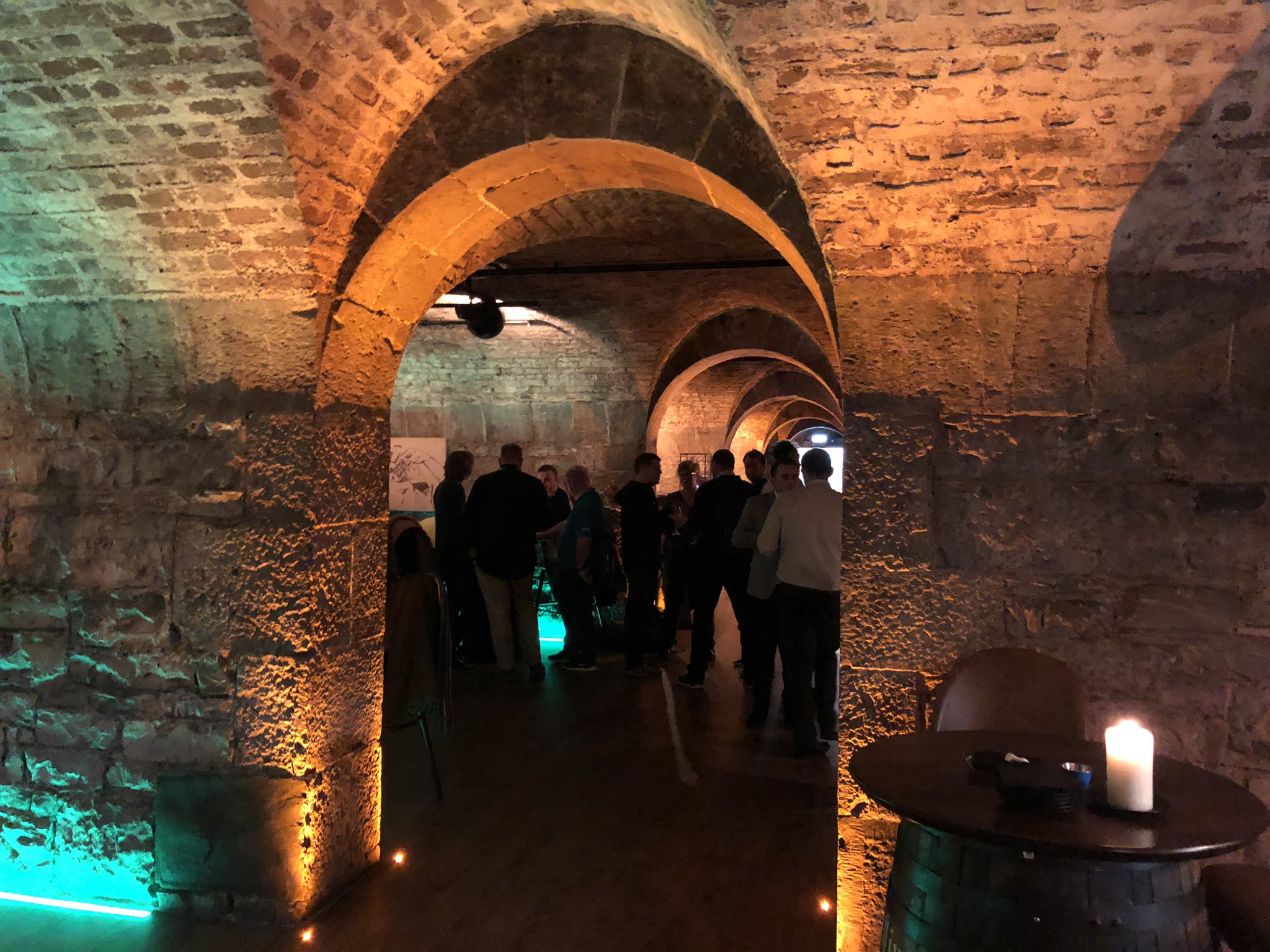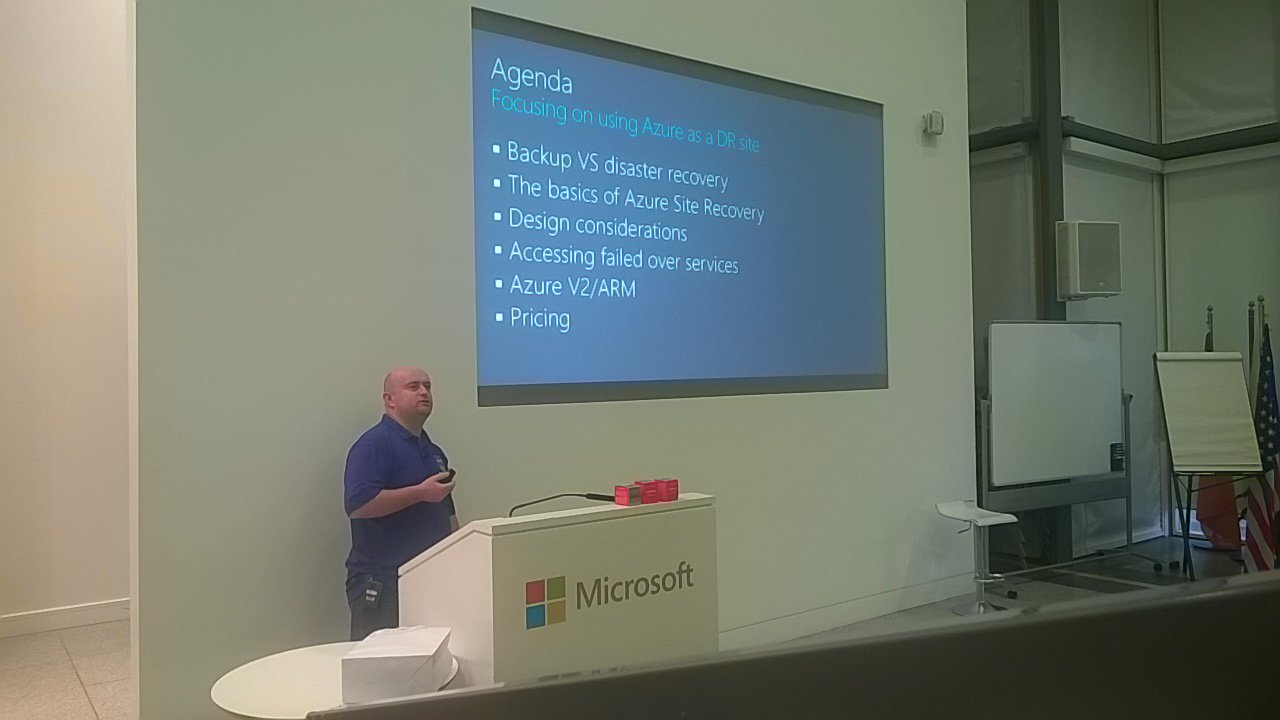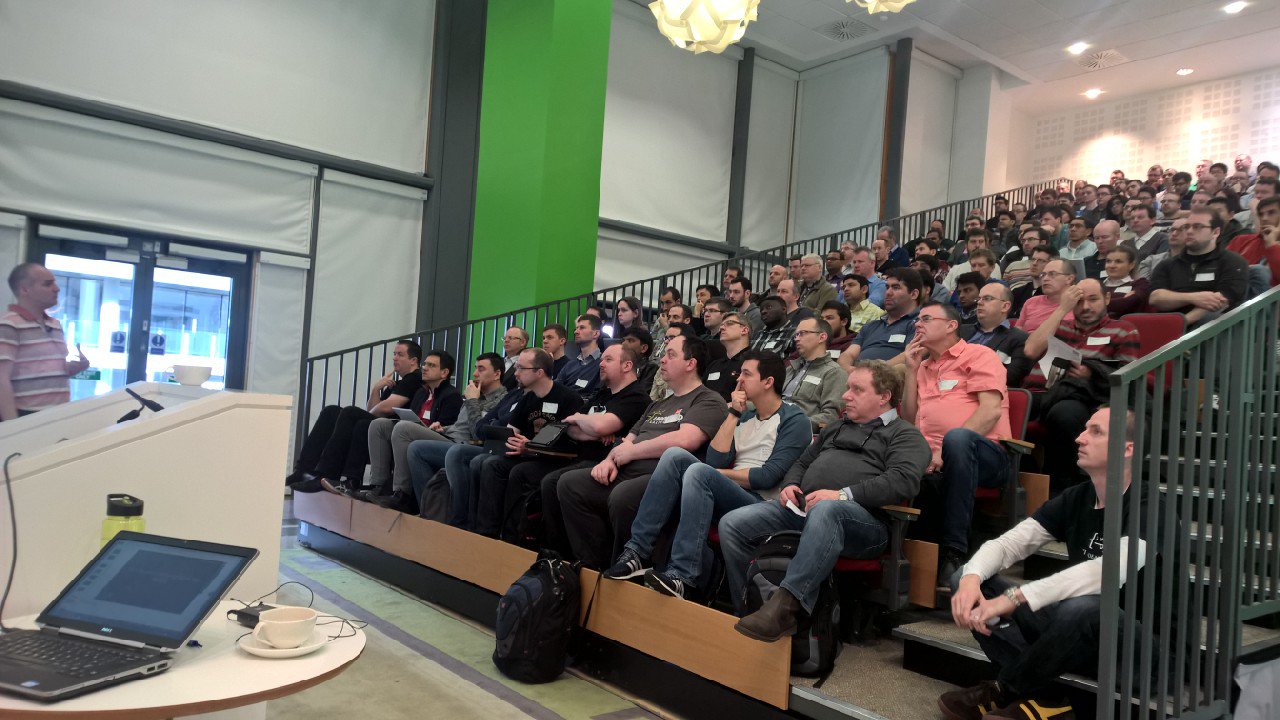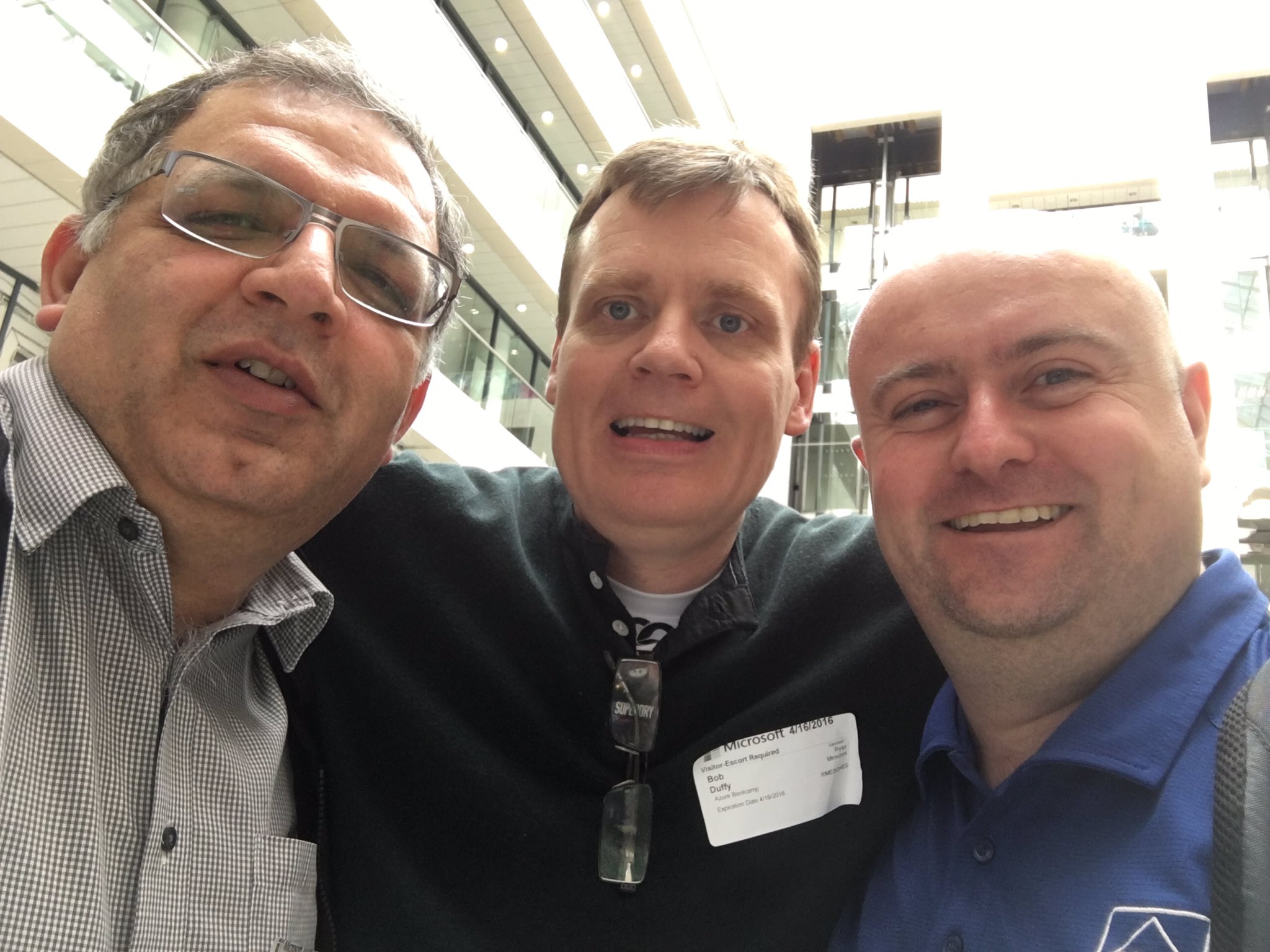I attended today’s Microsoft Ireland Tech Gathering, a surprising event for Microsoft Ireland – they do very little in the public anymore. What’s even more surprising is that Microsoft CEO, Satya Nadella, is in town to speak (here, an earlier CEO breakfast, and a later education event by Dublin City University). Nadella is doing the keynote. I’m in the 7th row, and I have a heavy camera to swing/throw if he talks about Cortana – which only works in 10 countries, and Ireland is not one of the ten  (just kidding, big security dudes!).
(just kidding, big security dudes!).
All photos in this post are the property of Aidan Finn and may not be used without my permission – just ask, it’s easy!
Claire Dillon
The group lead of the local DX (Developer Experience) team takes the stage. She explains what DX is, a team now focused on development (technical architects) and business (account managers) in in the cloud, no longer the mix of devs and IT pros that DPE once was.
There’s a quick reminder of the last Microsoft year. And open source is highlighted.

The world is changing very rapidly. Mobile, cloud, data growth, machine learning, AI, augmented reality …me: these aren’t endpoints, they are the start of a journey. Industries are changing, and cloud/mobile has set an expectation that goods/services are delivered immediately.
There’s an opportunity for start-up small-in the cloud companies – they are flexible and can be disruptive to the larger incumbents. Microsoft Encarta killed Encyclopaedia Britannia’s 244 year old published product. But EB is more profitable than ever! They adapted and transformed to embrace the Internet for delivering their product. WIkipedia is a newer threat to EB. EB focused on a quality and fact checked product, and customers that required that: education, for example.
IT pros and developers are in for an exciting time. Things are changing, and resistance is futile. Some facts:
- Outlook.com:400 million active users.
- Office on 340 million mobile devices.
- Skype users using 3 billion minutes of calls. Sky Translator doing real time comms in 8 languages.
- 40% of Azure income coming from small business and start ups. 1 in 3 Azure VM are Linux. The data centres consume less than 50% of the power of traditional data centres. 80% of large enterprises using MSFT cloud.
Today will be all about the digital transformation.
- Satya Nadella, Brad Smith, and Irish MD will evangelize.
- Then customers will talk about their journey, including some open source.
Cathriona Hallahan
MD of MS Ireland. Large breath of people here, partners, bloggers, media, small customers and large.
Microsoft has transformed under Satya Nadella.

Satya Nadella
CEO of Microsoft.
Vision: to empower every person on the planet to do more. Every product that they make is shaped by this vision. People build institutions to outlast them, including software.

It’s not about MS tech, it’s about what happens with that technology when it’s in customers hands, and how they can transform.
Mobility is not about a device, it’s about our mobility across all the devices in our life. Seamless movement is only possible in the cloud. This is why cloud first, mobile first are happening at the same time. Cloud computing is not a single destination – it’s a distributed computing service.
Digital transformation that customers will achieve through this technology is what is important. Microsoft is building this out through a hyper scale global cloud. 6 regions in Europe. The North Europe region (Dublin) is expanding – there are planning applications/decisions in the local news every now and then.
Azure is being built out as the first AI super computer (SkyNet).
Every compute node in Azure has FPGA’s now. You can distribute your AI across this fabric. N-Series NVIDIA chipsets provide great processing for AI too. But raw infrastructure is not enough. The magic is in software. Microsoft is state-of-the-art in speech and object recognition. Doing stuff with deep neural nets.
The Bot framework was launched 6 months ago. 4500 developers are building new kinds of apps on this framework. Graph gets a nod. Dynamics 365 is brought up – how can we think about business process as a continuum of productivity and comms, instead of putting it into a silo? Every company is becoming a digital company. You want to be able to empower every employee in your company with data, information, and analytics. Predictive and analysis power will be the new strength of a business – can you do it better and faster than your competitor and jump on opportunities. Can you predict service failures and proactively remediate? For example, factory can shift from focusing on the thing they make to the service they offer.
He refers to a digital feedback loop – data coming in and coming back out as intelligence.
How is all this going to diffuse through the world? In Europe, they see a broad spectrum of uses in Europe, and by European companies around the world. Access to the technology is critical. A Swiss company called Temenos has democratized access to banking s/w in Asia. They use the public cloud – there’s a video.

Some local Irish examples. He met with AIB and talked about their strategies. They are using the cloud and their data centers to transform customer banking. Office 365 is being rolled out to empower employees. Cubic Telecom is working with Automative Industry – to connect every car to a mobile phone network – s/w allows a car to move to any region and have network support without changing hardware. eHealth Ireland is connecting patients with doctors, providing information in patients’ most vulnerable moments.
In the future, this infinite cloud infrastructure and new types of devices (AR, VR, IoT) is what will transform every life and every industry. HoloLens is an infinite display – mixing realities. Another video.
When you change the way you see the world, you change the world you see.
It is incumbent on technology pros and government to ask if a tech is going to help everyone on the planet. MSFT launching a book called a cloud for global good.

Brad Smith
Chief legal man in Microsoft.
Started his career in MS France. Talks about the history of MS in Ireland – from manufacturing CDs, to eventually be involved in a global cloud issue. Their data center in Ireland lead to litigation in the USA about the FBI demanding access to a mailbox in Dublin – Microsoft won, in case you didn’t know. It was good news for Microsoft, and great news for the cloud. Microsoft touring Europe this week to talk about the globality of the cloud.
He reckons that the cloud is a new industrial revolution – a recap of what he presented at WPC earlier this year.
The cloud is powering all of the current digital transformations. How do we ensure that this cloud serves everyone and not just the lucky few. We need to act with shared responsibility. The new book as 72 recommendations to ensure a cloud for global good.

We need a new set of cyber security rules. We need personal rights for data crossing borders.
We more than just trust. We need a cloud that is responsible, and respects human rights and public safety.
We need to advance sustainability. MS data centers already consuming the same power as a small US state. This is escalating. MS committed to get better every year on use of renewable energy and to be transparent. By 2018, it’s to hit 50% or better, and 60% in the next decade … but they need help with supply.
We need laws to enable AI, but laws to control ethics.
The cloud needs to be more inclusive for people around the world. Form access to digital literacy, developing skills for the next generations.
To build a digital economy, you need to build a learning economy. We need to connect rural communities – the cloud can reduce distances. We need to think about people with disabilities – 300 million are visually impaired. Over 1 billion those with some kind of disability. They have potential to do great, but face obstacles to adopt and achieve.


